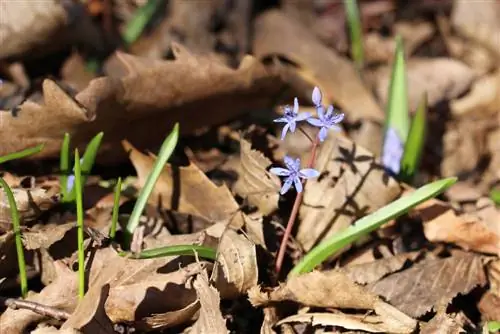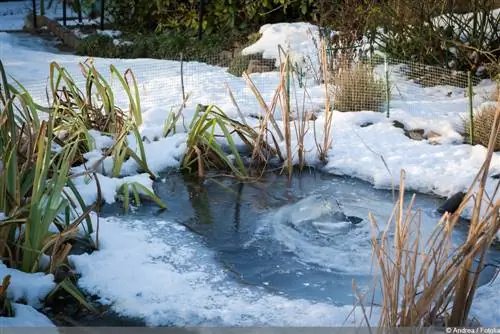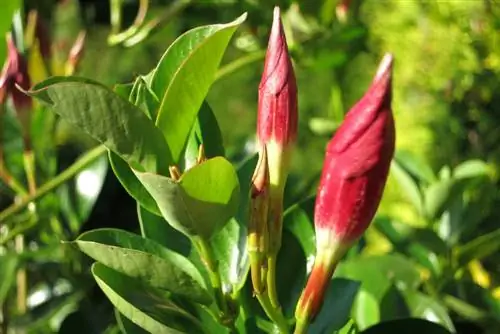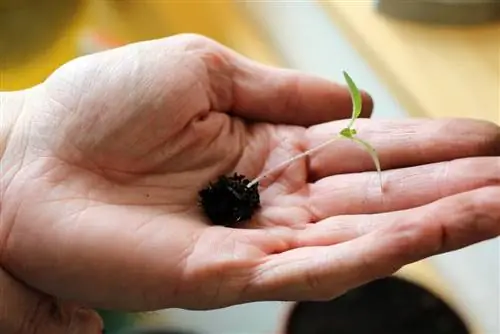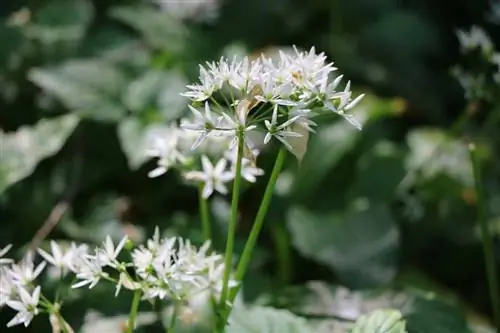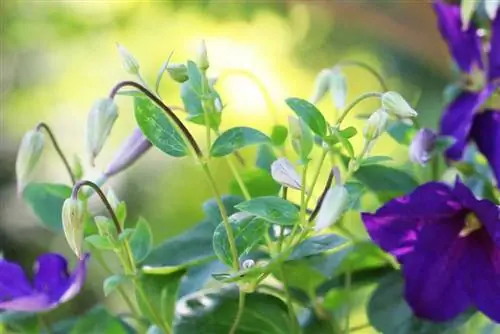- Author admin [email protected].
- Public 2023-12-17 03:39.
- Last modified 2025-01-24 12:45.
The squill plant (Scilla bifolia) is a member of the asparagus family and blooms in spring from March, when the snowdrops have already bloomed. The squill is also called star hyacinth. A similar species is the autumn squill.
The squill is an early bloomer and enchants with strong sky blue flowers. The flower look is star-shaped. The best-known squill is probably the two-leaved squill. It is often found in gardens or parks as a wild plant. The squill bulb consists of five shoot axes that can reach a height of up to 50 cm. The grape-like flowers can often be seen on upright or slightly bent stems.
- Approximately 80 varieties are cultivated worldwide. White flowers are also among the varieties.
- The squill is a robust, undemanding plant that is absolutely hardy.
- It should be remembered that the plant should bloom extensively in order to leave a strong overall impression.
- If it is not disturbed in its place, it reproduces by self-sowing.
- Growing bulbs can be removed after the leaves have fallen. They are stored dry in the summer and planted from August to October.
Suitable location
Like all early bloomers, the squill is planted in the ground in autumn, as long as the ground is not yet frozen. Planting can also be done in spring if the flower bulbs have been stored in a cool and dry place. The soil should be humus, loose and permeable. The squill feels most comfortable in a sunny spot, but it can also be in partial shade. The distance between planting the bulb should be 10 cm and the depth should be appropriate for the bulb. Once you have found the right location for the squill, it can be left to its own devices. It will produce a carpet of blue flowers in several years.
In addition to other early bloomers such as snowdrops, crocuses, daffodils and tulips, the squill with its blue color forms a wonderful contrast. But you can also plant it under trees such as lilacs or ornamental cherries, it thrives there too.
- Early bloomers,
- loose and permeable soil,
- sunny to semi-sunny location,
- undemanding plant.
Care and propagation
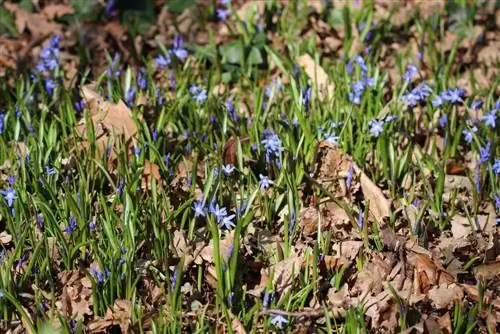
Caring for squills is uncomplicated. Once the plant has finished flowering, it needs rest until the leaves are gone. This allows the plant to bloom vigorously again the following spring. During the cold season, the squill likes a layer of leaves or straw. These should be removed again in spring, otherwise the squill does not need any fertilization. The propagation can be carried out by sowing or so-called breeding onions. The breeding onions are removed after the mother onion has fallen off and can then be planted. Sowing, on the other hand, is more difficult. The ants are happy to dedicate themselves to this task. They carry the small seeds away and thus ensure natural reproduction everywhere.
- Propagation by sowing,
- or propagation by breeding bulbs.
The squill can be transplanted after it has faded. To do this, the flower bulbs must be dug up and deep. The leaves must remain on; they must not be removed. Of course, a perfect dig is in June when the foliage has died back. Remove the brood onions from the mother onion and store in a dry place until August. Otherwise, the squill is uncomplicated and thrives in almost any soil. However, heavy soils are not suitable. You should make sure that the plant is not too dry and does not have wet roots in the cold season. Once the squill has grown, it multiplies quickly by self-seeding. The squill is poisonous, so you should avoid planting it in a household with small children!
Wintering
The squill is hardy. But before the first frost begins, you should cover the earth with bark mulch, pine branches, piles of leaves or straw. If you want to remove the squill bulbs, they can overwinter in a flower pot or flower box in a cool, frost-free place. Frost-free, as these containers in particular freeze over in winter and the flower bulb can freeze. The squill is one of the most resilient onion plants that exists in our latitudes.
Planting tips for flower bulbs
The squill grows from an onion. Firstly, since flower bulbs bloom in different seasons, you can prolong flowering by planting two rows of bulbs. But you can plant different plants such as crocuses in one row and squills in the other. So you have something blooming when a plant has finished flowering. It is important that the flower bulbs that are at the top are not too close or too deep together. Otherwise it is too difficult for the plant to reach the surface of the earth. This is particularly important for squills, as they reproduce by division. Waterlogging should be avoided. If the flowers have faded, the spent blossom should be cut off. This means the plant does not use any energy to form seeds. The above-ground plant should be allowed to wither.
Special species of squill
Scilla siberica is a white-flowering garden squill, Scilla bifolia is a two-leaved squill and Scilla mischtschenkiana is a Caucasian squill. The Spanish squill (Scilla hispanica) has bell-shaped individual flowers that hang down. It shows its floral splendor in mass planting. A blue carpet ushers in spring.
Repotting the plants
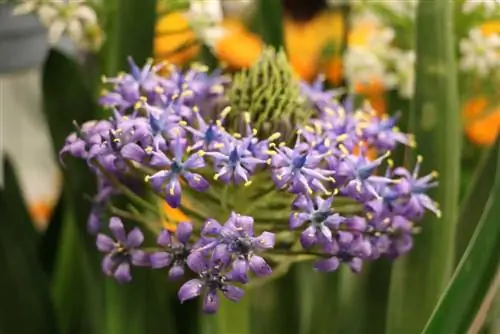
In early autumn, place the young onions close together in a container, under the surface of the soil. The earth should then be moistened. Then place the onions in a dark, cool room. If you don't have a cold basement, you can put the pickled flower bulbs in a plastic bag and store them on the balcony or a shady windowsill. When buying flower bulbs, you should make sure that they do not have any mold.
What you should know in brief
- The squill is an undemanding plant. In early spring it shows its beautiful blue flowers.
- It looks attractive as a combination plant, but also under trees.
- The plant is suitable for the rock garden, for grave planting, for flower boxes and planters.
- The squill is a spring bloomer, a perennial plant. Its star-shaped flowers are available in white as well as blue.
- The plant blooms from March to April. There are over 80 different species.
- The squill has a distant resemblance to the grape hyacinth.
Squills are easy to care for, robust and absolutely hardy. If they feel comfortable in their location, they spread widely and become wild. To do this, they need a bright to semi-shady place and humus-rich, permeable, nutrient-rich and not too dry soil. This should preferably contain lime. Darker locations are also tolerated, including under trees.
- The bulbs are best planted in autumn. You can leave them to their own devices. They spread on their own.
- In spring it is beneficial to mulch the planting site with compost.
- If the squill is under deciduous trees, simply leave the leaves lying in autumn as protection and fertilizer.
- In spring the squill needs enough water. However, waterlogging should be avoided.
- The plant is propagated by seeds or bulbs.
Hungry ants often cause the squill to spread. They carry away the small seeds-filled fruits and spread them.
Apart from onion rot, there is hardly any disease that affects the plant. Pests are also extremely rare.
The varieties 'Spring Beauty' (very strong blue), Scilla peruviana (slightly taller plant) and Scilla mischtschenkoana (very early white flowers) are particularly recommended.

